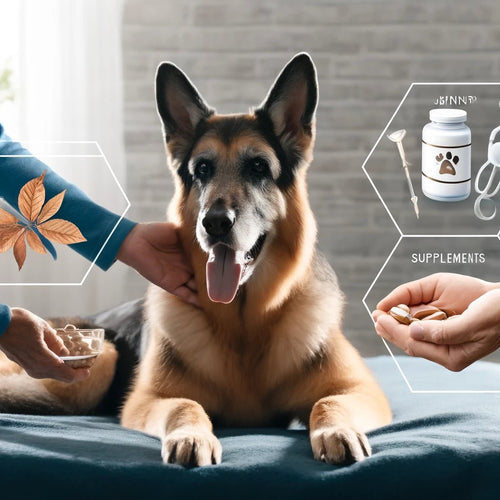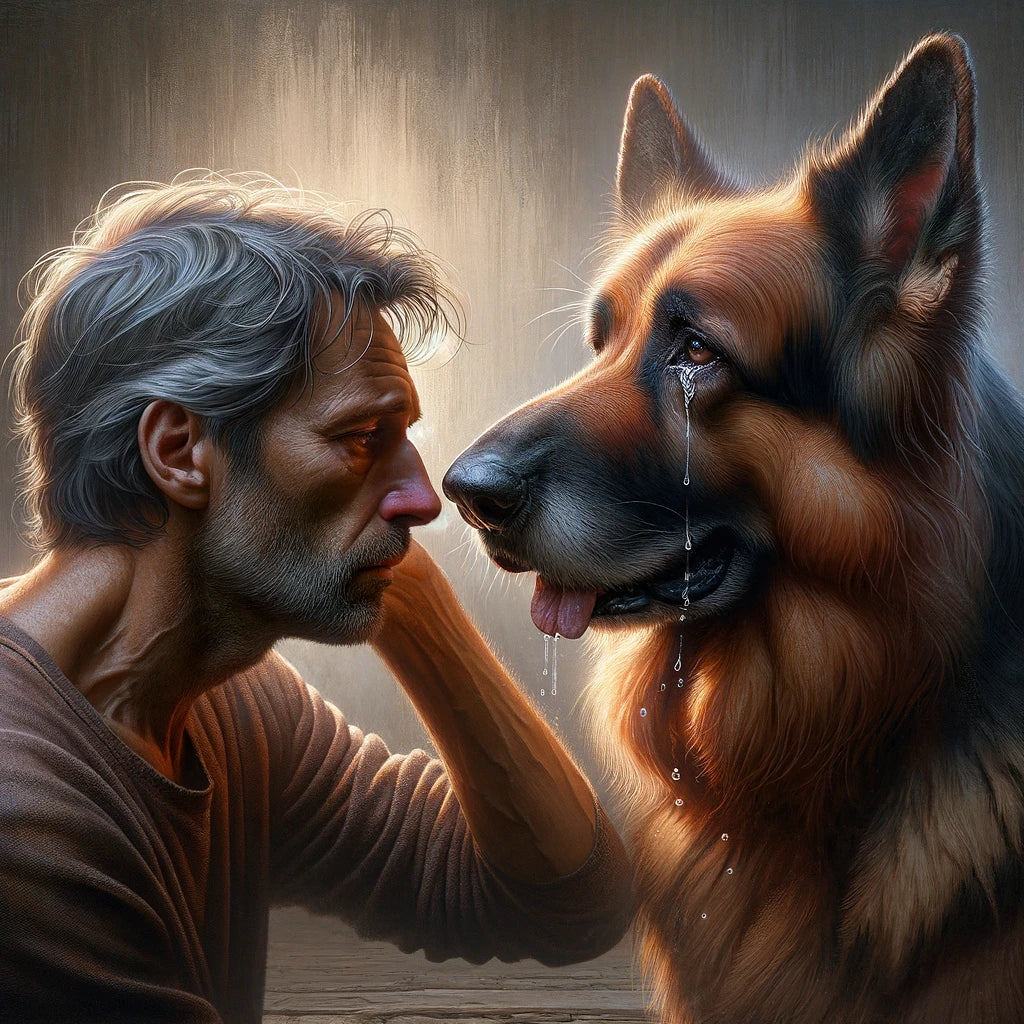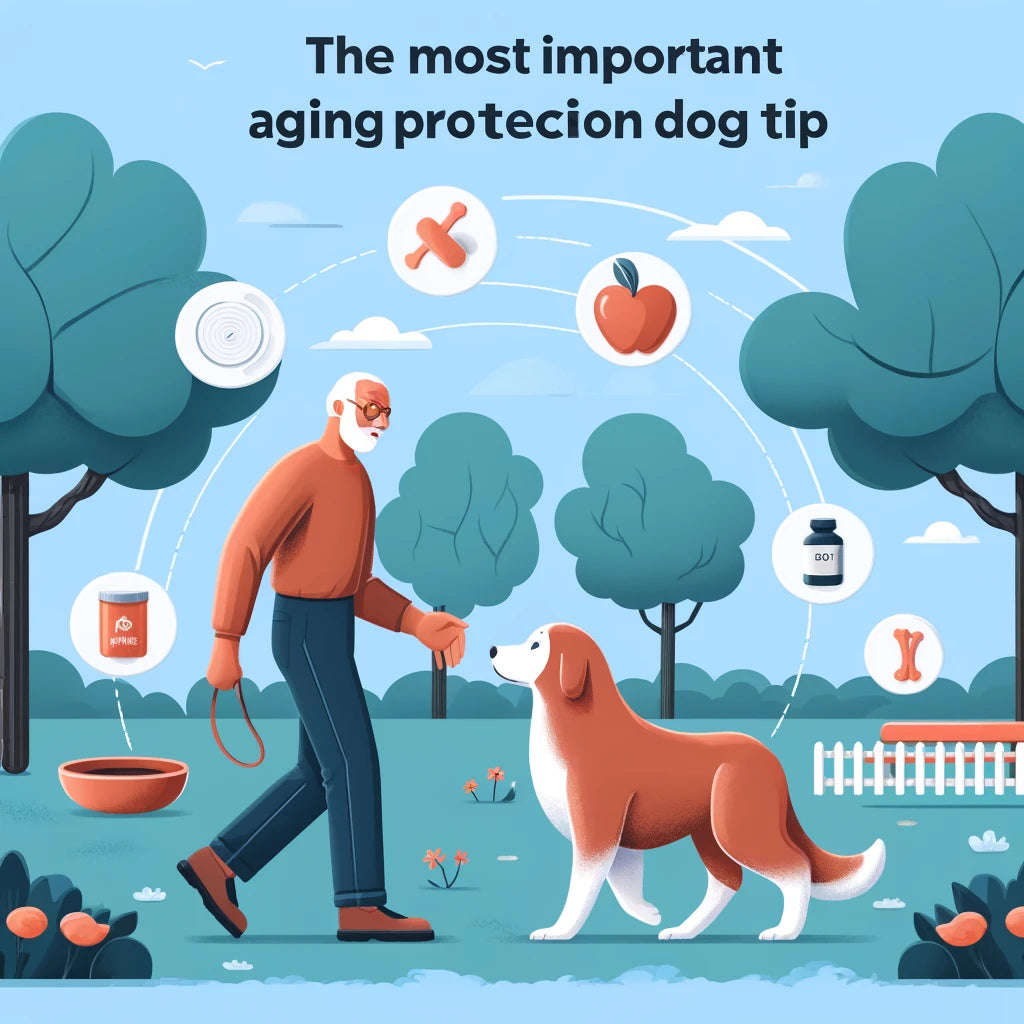Wayne Simanovich - October 16 2023
How to Care for A Geriatric Protection Dog

CCanine aging is very similar to human aging, with many of the most common symptoms including:
# Vision loss
# Hearing loss
# Arthritis
# Reduced energy
# Incontinence
# Loss of smell
Like us, dogs are even susceptible to cancer (roughly 50 percent of dogs over the age of 12 suffer from this disease).
Protection dogs are selectively bred to be aware of unfamiliar stimuli. Gradual loss of senses can be unsettling for any dog and although the dog is still available to work, they may need to be placed in areas with better views, as well as areas where hearing strange noises is more prevalent.
Protection dogs are also selectively bred to perform a very important function — guarding you, your family and your property. A decrease in activity and athletic ability is another factor in the aging protection dog. While they may lose the ability to physically stop a threat, they are still quite effective as an alarm and remain quite valuable as a family security dog.
What steps can you take to help your family guard dog transition into the golden years as smoothly as possible?
Helping Your Aging Protection Dog Make a Smooth Transition

As the above symptoms become more acute, you need to be aware of your dog’s potential limitations. The below tips represent gradual changes you should consider as your dog continues to show signs of advanced aging:
1. Limit Outside Exposure
Whereas younger protection dogs can never get too much outside time, older guard dogs need to spend increasingly less time in the yard. This is especially true for arthritic dogs whose bones are highly susceptible to rain and cold.
2. Make Exercise a Priority
Although you shouldn’t keep your aging guard dog outside too much, it still needs regular manageable exercise. This keeps the bones and muscles in proper working order. It also keeps your dog busy, helping to fill the void created by retirement.
Just remember that whereas puppies already receive tons of exercise (with or without your help), keeping older dogs in shape requires attention and a little effort.
3. Keep Things Familiar
New stimuli and surroundings may, or may not cause some discomfort in dogs — especially as they lose their eyesight. Don’t move furniture around too much (but be sure to block off dangerous areas like stairs).
4. Improve Your Dog’s Comfort
With some simple lifestyle changes, you can reduce your dog’s possible physical discomfort by:
# Add a dog bed or a mat for extra comfort on hard surface floors.
# Keep your dog’s nails trim by cutting them once every three or four weeks. With older dogs, long nails can disrupt balance and make walking more difficult.
# Adjust your protection dog’s diet with more frequent (twice daily but smaller) meals designed specifically for less active dogs.
The Most Important Aging Protection Dog Tip

The above tips can help your aging guard dog make a much smoother transition to his or her new lifestyle. Introduce these changes gradually.
But the most important tip of all is something you can begin right now: Lavish your dog with attention and consider the addition of your new and younger protection dog as a source of companionship and play time for both you and your senior protection dog.
This is important for all dogs of all ages. But as your protection dog leaves years of dedicated service behind, it’ll need as much reassurance and love as possible.
Have a Question? Contact us
Huggable Security ™
Trained by a World Champion. Delivered to your door.
Huggable Security ™
Trained by a World Champion.
Delivered to your door.

Featured Dog of the Month
Available for Delivery
No finer quality in a trained personal companion.
Contact Us for Current Availability

Fully Trained Adult German Shepherds
Available for Delivery
For over 40yrs the Fully Trained Adult has been the cornerstone of our program. Huggable Security delivered to your door.

Fully Trained Adult Belgian Malinois
Available for Delivery
For over 40yrs the cornerstone of our program. Huggable Security delivered to your door.

Trained Adolescent German Shepherds
Available for delivery
The adolescent age group is an excellent choice for quality and value. Bred, raised and trained at our facility.
Contact for more info

Trained Adolescent Belgian Malinois
Available for delivery
Adolescent Belgian Malinois from our C litter finished in the off leash obedience phases and started in the protection phases.
Contact for more info

Working German Shepherd Puppies
Limited Availability
We have a very high quality litter of puppies sired by one of Germany's top young performance males.
Details



